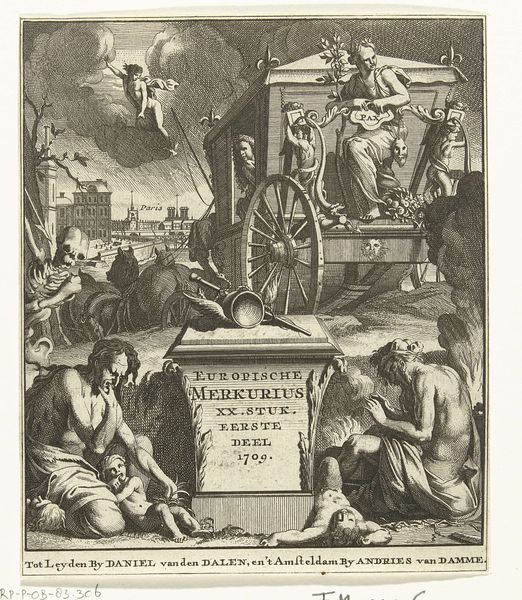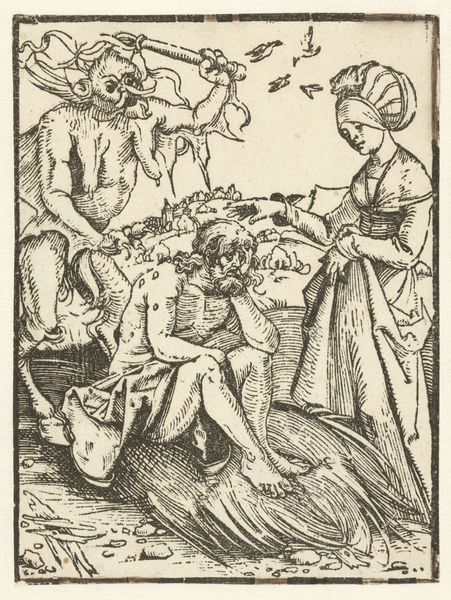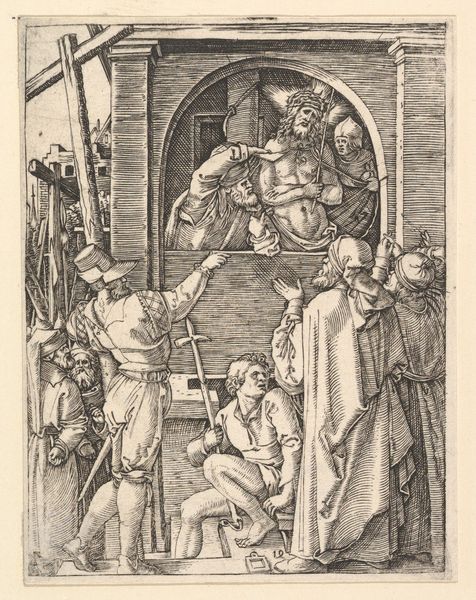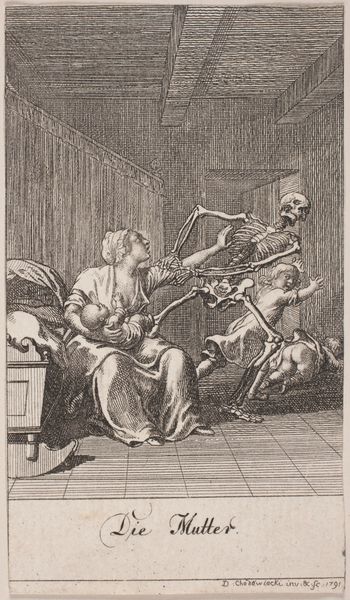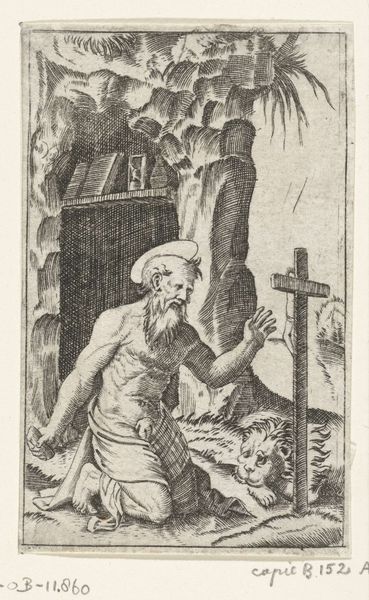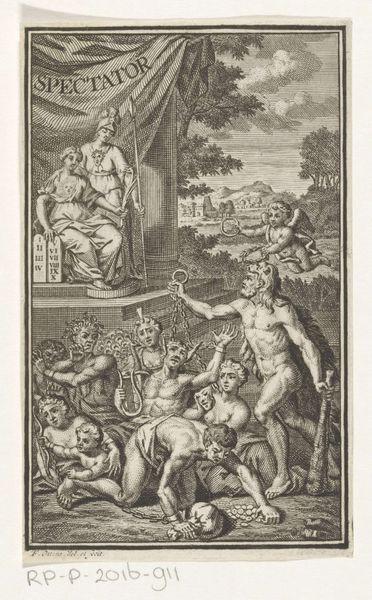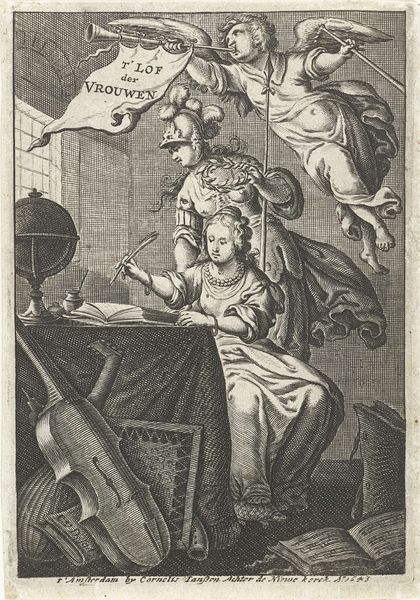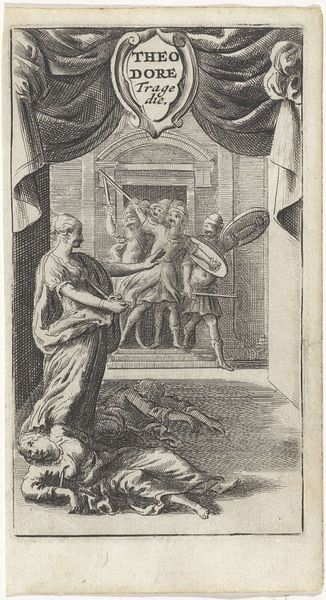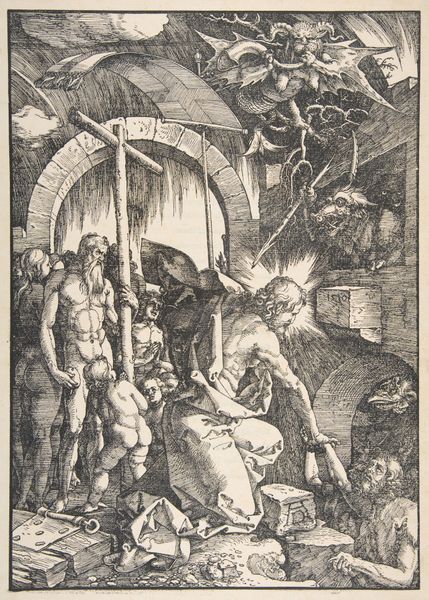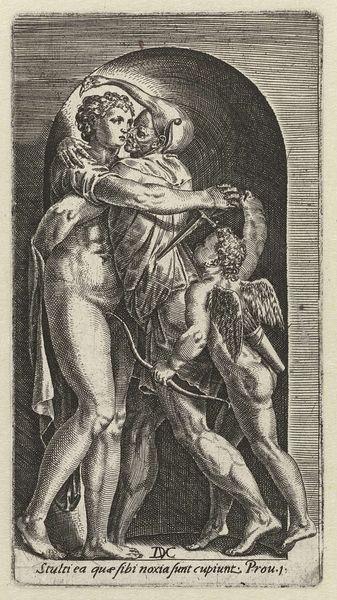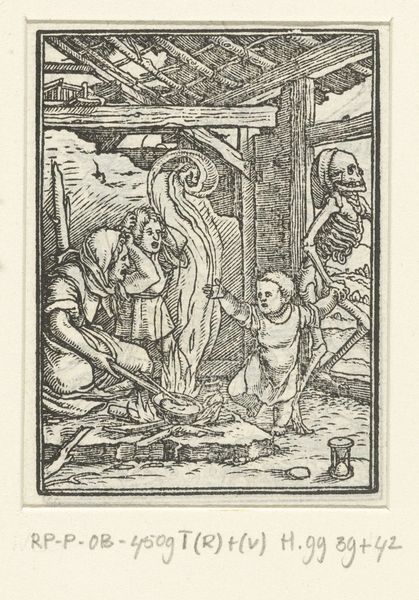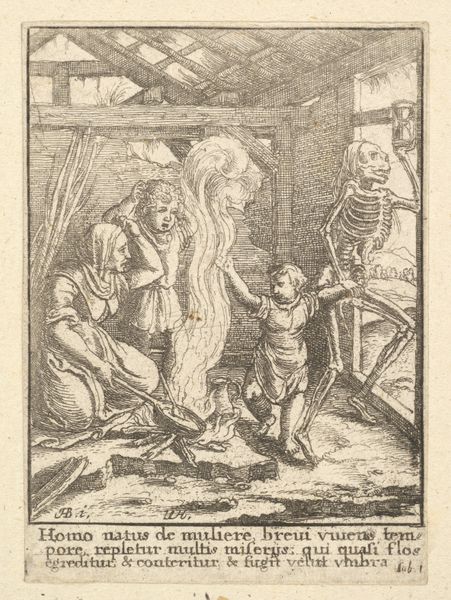
print, engraving
#
portrait
#
allegory
# print
#
landscape
#
mannerism
#
figuration
#
form
#
line
#
genre-painting
#
history-painting
#
northern-renaissance
#
engraving
Dimensions: height 77 mm, width 50 mm
Copyright: Rijks Museum: Open Domain
Curator: Let’s examine Heinrich Aldegrever’s "Death and the Abbot," an engraving dating to 1541, residing here at the Rijksmuseum. A rather stark scene, wouldn’t you say? Editor: It is immediately unsettling. The dramatic contrast achieved with the lines, creates a tangible tension, almost like a dissonant chord in music. And is that... Death stealing his garments? Curator: Quite right. Aldegrever masterfully employs the Dance of Death motif, popular at the time. Notice how Death, adorned in bishop’s mitre and wielding a crosier, literally strips the Abbot of his vestments. The symbols of authority, turned into the mocking costume of Death. Editor: It speaks volumes, doesn't it? The hourglass in Death’s other hand underscores the Abbot's expiring time, the futility of earthly power in the face of mortality. Note, also, how meticulously rendered the Abbot’s horrified expression is— a potent representation of fear and helplessness. Curator: Absolutely, but let’s also consider Aldegrever’s Mannerist style here. The elongated limbs, the contorted pose of Death… They create a sense of unease, disrupting any sense of naturalism. This heightens the work's expressive impact and symbolic charge. The overall composition follows a well-organized approach based on the lines used. Editor: That Mannerist distortion seems crucial to the message. It amplifies the grotesqueness, turning the Abbot's demise into a lesson about vanitas. The visual language evokes the terror of sudden death. The line from Proverbs inscribed reinforces the danger of not understanding our own mortality and thus becoming a fool. Curator: An astute point! Even the window, placed asymmetrically, serves a purpose in its abstraction and relation to line and form. Its hard geometry amplifies the thematic implications and relates to the composition’s greater semiotic architecture. Editor: It is remarkable how a relatively small engraving can encapsulate such weighty ideas and enduring symbolism about authority, religion, and the limitations of earthly things. Curator: Yes, Aldegrever compels us to examine both the formal structure and deeper narrative within this work, something the Northern Renaissance mastered to an extremely effective degree. Editor: A grim reminder, beautifully—if unsettlingly—rendered.
Comments
No comments
Be the first to comment and join the conversation on the ultimate creative platform.
